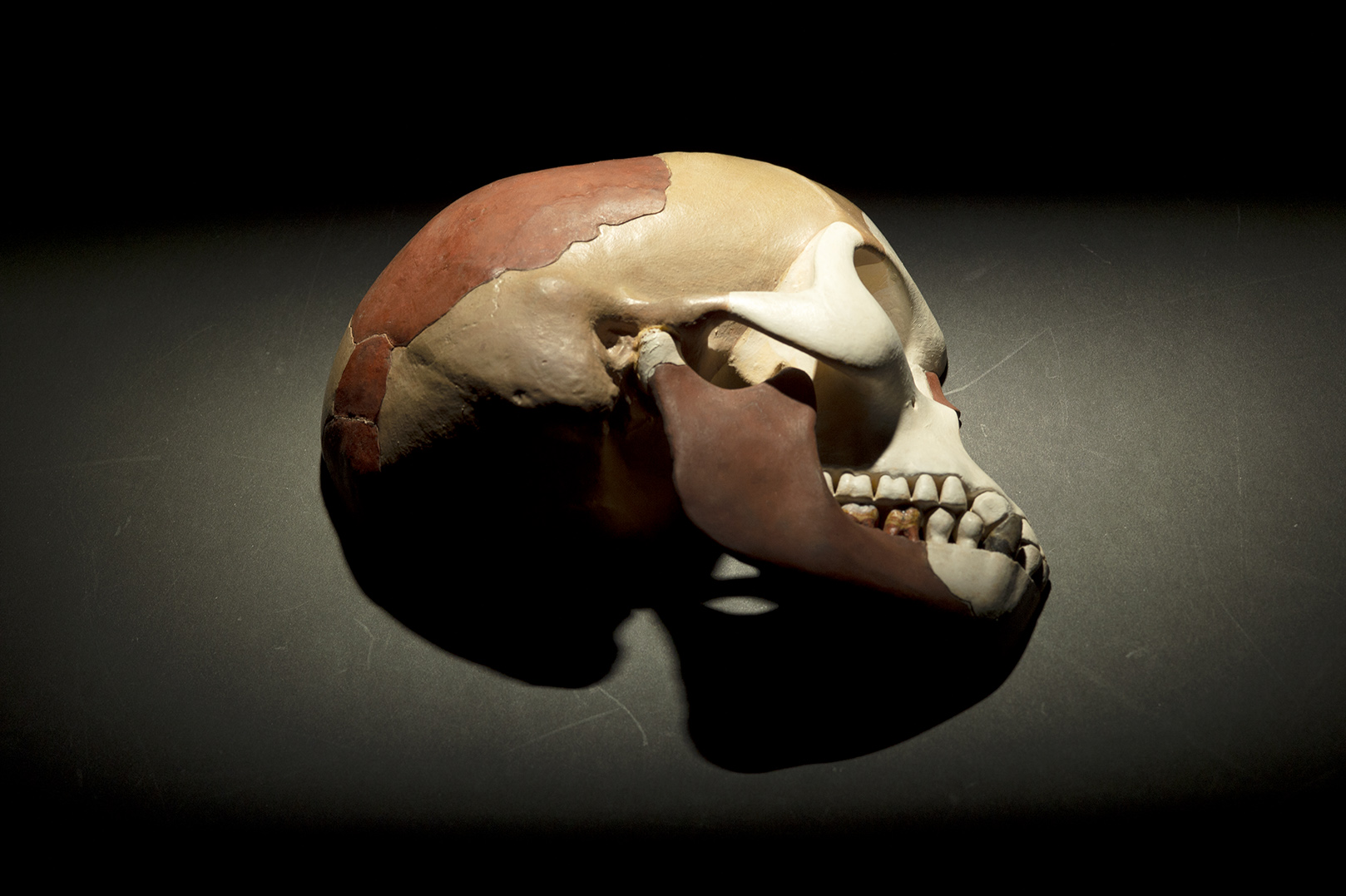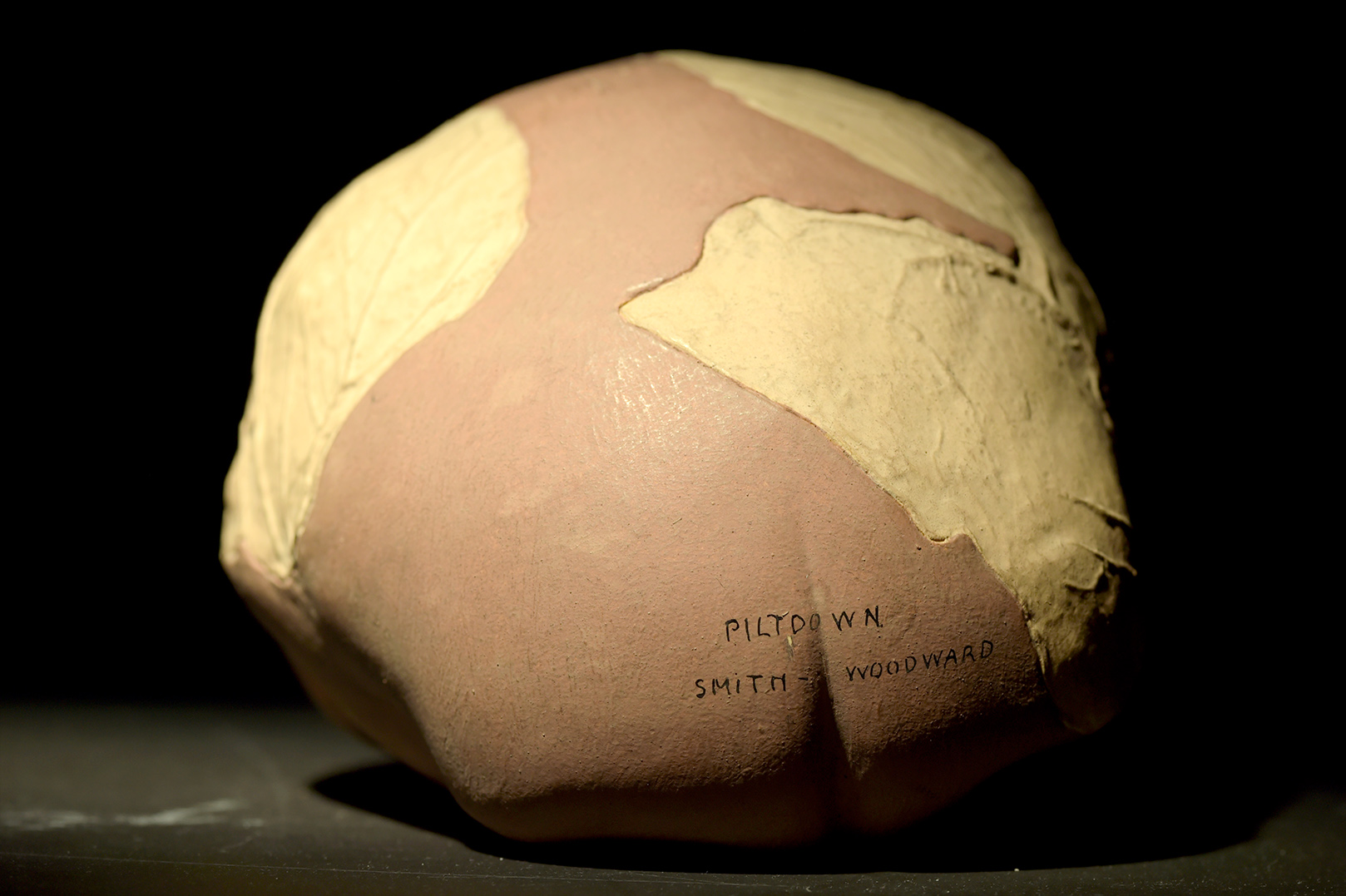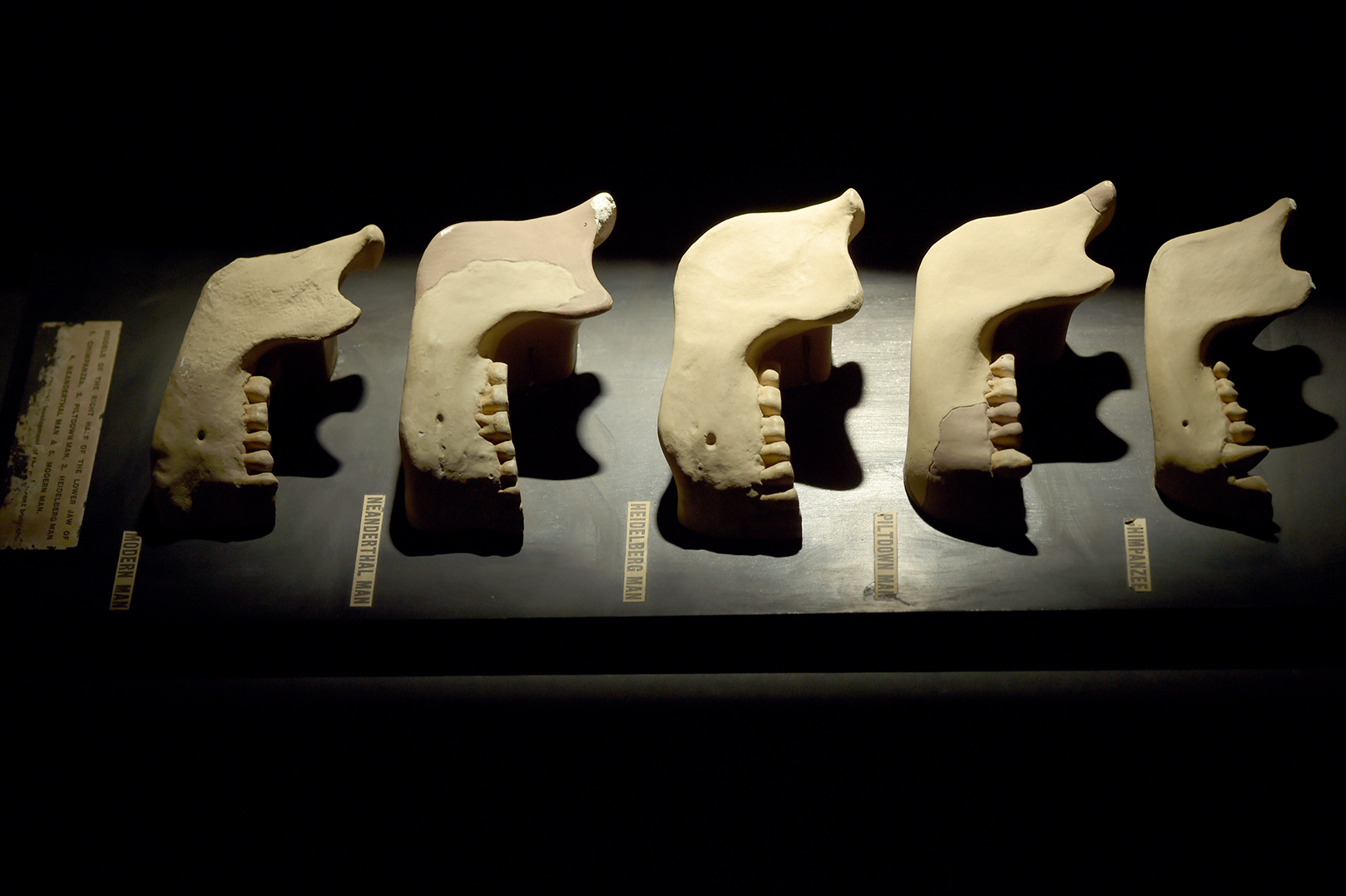
Sciences & Technology
Miss Lambert’s Thylacine skull

The University of Melbourne’s anatomy museum features fossil models from an entirely fictional early human; a forgery that derailed the study of our evolution for decades
Published 17 May 2018
‘Piltdown man’ was the name given to a handful of fossil fragments found at a site in East Sussex, UK in 1912. The fossils, quickly identified as being from an early human, were named Eoanthropus dawsoni; the species name honouring their discoverer, amateur geologist Charles Dawson.
Despite the fossil assemblage comprising of merely skull fragments and a jawbone with a few teeth, the find attracted huge attention from both the scientific community and the public, becoming one of the most famous fossil finds of all time.

Eoanthropus was particularly celebrated because it implied that humankind had originated in Europe; a beguiling hypothesis for many in the Western world.
Here’s the rub: Piltdown man was a fake. It remains a stark warning of the awkward truths about biases inherent in science.

Sciences & Technology
Miss Lambert’s Thylacine skull
The fossil had been manufactured by combining elements of a human skull and a modified orangutan’s jaw - and its discovery was entirely fabricated. Because it exhibited characteristics of both humans and apes it suggested the attractive possibility that this was the fabled ‘missing link’ that anthropologists had theorised but not yet found.
The hoax confounded scientists and derailed the study of prehistoric humans for decades, until it was conclusively shown to be a forgery in the early 1950s. The culprit was Mr Dawson, who has now been shown to have been responsible for many archaeological and palaeontological forgeries throughout his life. But Piltdown man was his masterpiece.
Evidence of how widespread the impacts of his hoax were can be found in museum collections around the world, including here at the University of Melbourne.

The Harry Brookes Allen Museum of Anatomy and Pathology, which has many specimens related to palaeoanthropology, includes a plaster cast of a reconstructed Eoanthropus skull.

Arts & Culture
Bones of contention
It sits amongst a collection from Professor Frederic Wood Jones from the Department of Anatomy, who had a particular interest in human evolution. Professor Wood Jones was something of an iconoclast and spent most of his career championing a controversial – and wrong – hypothesis of human origins; that humans were not most closely allied to great apes but rather had evolved from the tarsier lineage.
The Eoanthropus skull reconstruction has different coloured sections indicating the assumed position of the fossil fragments. It is labelled with black pen; ‘Piltdown Smith-Woodward’. Arthur Smith Woodward was a palaeontologist at London’s Natural History Museum who was the key researcher associated with the Piltdown finds. From his reconstruction, Frank Barlow, a model-maker also based at the Natural History Museum, extrapolated a cast of the hominid’s brain.
A copy of this brain cast also made its way to Melbourne and remains in the Harry Brookes Allen museum’s collections.
The brain of Piltdown man was important, as it was at the centre of a debate on early human development. At the time, many scientists believed that Homo sapiens’ large brain evolved early in our history. The primitive characteristics in the jaw of Eoanthropus, combined with the skull capacity of a modern human confirmed their biases and added to the allure of the hoax.

Another item in our collections from this era is a plaque showing comparisons between jaws of various human species and a chimpanzee. Manufactured in the early to mid-20th century, it portrays a sequence from a chimpanzee to a modern human, with two species of early human (Homo heidelbergensis and Homo neanderthalensis) in the middle - and with Piltdown man linking these to the great ape.
Students learning anthropology at the time would have been shown an orderly progression of morphological change, with the chin becoming less sloping and the canine teeth reducing in size.

Arts & Culture
Brought to life, 2000 years later
This sequence of the changing shape of hominid jaws is very neat and linear, and reflective of the assumption that progress from apes to bipedal, intelligent humans was inevitable. This is how the Piltdown man hoax worked so well; contemporary scientists expected to see a simple, linear pattern of change and the faked jaw perfectly fitted into these expectations.
However, fossil discoveries throughout the second half of the 20th century revealed that the human family tree is far more complex and branching.
There is no clear line of progress from ape-like ancestors to modern humans. Instead the fossils revealed many species of hominids with a mosaic of primitive and modern features, often with multiple species coexisting.
For the scientists involved, the Piltdown man fiasco was deeply embarrassing. Nobody mourned Eoanthropus and the scientific community was glad to move on.
It’s thanks to museums that we can see and interact with objects from this fascinating time in history and get a glimpse into a world where scientists, students and public alike were under the thrall of Eoanthropus dawsoni.
The 18 May marks International Museum Day to raise awareness on how important museums are in the development of society.
Banner image: Paul Burston/University of Melbourne